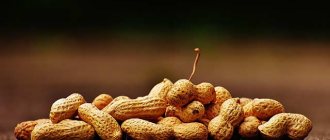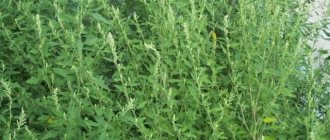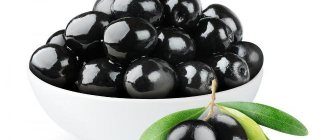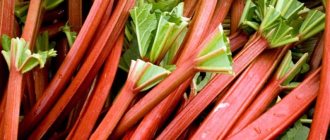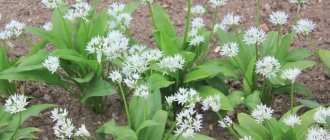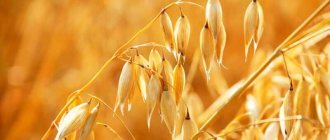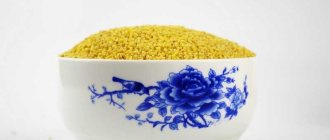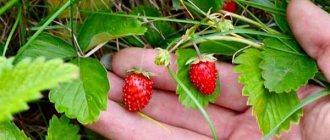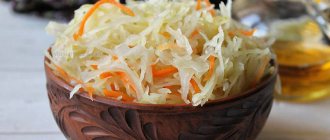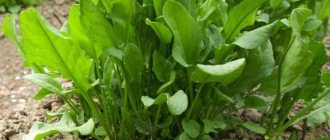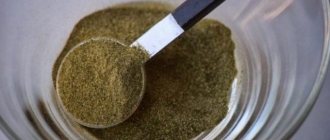Among the various representatives of the flora, the pistachio tree with a dense crown is deservedly considered a long-liver. Starting to bear fruit no earlier than 7-10 years of growing season, it grows for about four centuries, while producing tasty, healthy fruits. It is difficult to name a plant that would be so highly valued by traditional and folk medicine. A huge amount of phosphorus has a positive effect on memory - useful for students, those engaged in mental work, and elderly people. Lutin and zeaxanthin strengthen the eye muscle, so it is important for office workers, drivers and anyone who suffers from poor eyesight to eat pistachios. Phytosterols in oil ensure that the molecular structure of cellular tissue occurs normally. This is only a small part of the beneficial properties of the drupe fruit, so it is worth getting to know its properties better in order to fully consume it with health benefits.
How and where pistachios grow, their types
Today, more than 20 species of the plant are known, but only some of them are suitable for food; a common variety is “real pistachio.” It has large fruits and is distinguished by its taste. Some were named after their place of growth: “American”, “Chinese”. It is noteworthy that it is Chinese frost-resistant that is best for the rootstock of other, less cold-resistant varieties. Resins are obtained from “mastic” and are used in folk medicine. The “tupolis” and “turpentine” varieties are valued for the turpentine extracted from the plant.
The pistachio tree is long-lived and can grow to enormous sizes
The clusters of drupes ripen by the end of September. Those who know how pistachios grow say that the signal to start harvesting is a clicking sound: the nut shell bursts. Harvesting is made difficult by the fact that during the day the fruits are protected from the sun by a sticky resin with an intoxicating aroma, so harvesting work in the evening is common. Although machines for harvesting have been invented, they are not used everywhere.
The plant has chosen the arid, often rocky northern regions of the African coast, Central and East Asia, and is specially cultivated in Central America. It is found in single specimens and groves, especially in those regions where industrial fruit harvesting occurs. Most of the products are of Iranian origin.
Thanks to simple agricultural technology, the plant is planted in the gardens of Crimea, in the west and south of Europe. The only obstacle to mass cultivation is the weather - young trees, although they can tolerate frost, do not like long winters with sharp temperature fluctuations.
Composition and calorie content
Regardless of the form in which pistachios enter the body, the composition allows you to obtain the necessary portion of valuable substances. To get the daily dose, a very small amount is required:
| Composition, calorie content 100 g | Vitamins, mg | Minerals, % | |||
| Proteins (including valine, arginine, isoleucine) | 20g | Gamma tocopherol (E) | 22,6 | Iron | 333 daily value |
| RR | 13,32 | Copper | 50 | ||
| Fats (including Omega-6 Omega-9 | 45g 13.4g 23.1g | Alpha tocopherol (E) | 2,3 | Magnesium | 50 |
| Thiamine (B1) | 0,87 | Phosphorus | 50 | ||
| Carbohydrates | 27g | WITH | 5,6 | Calcium | 25 |
| Choline (B4) | 90 | Zinc | 23 | ||
| kcal raw salted | 560 569 | Pyridoxine (B6) | 0,5 | Silicon | 167 from the daily value |
| Riboflavin (B2) | 0,16 | Selenium | |||
| 1 nut | 4 kcal | Pantothenic (B3) | 0,52 | Manganese | 190 from the daily norm |
| Biotin | 10 mcg | ||||
As you can see, the calorie content of salted pistachios is only 9 units more than that of raw ones. Even those who carefully watch their figure can safely eat 10-15 pieces a day so that the body receives substances that it does not produce itself.
the rich chemical composition of pistachios has a positive effect on human health
Chemical composition and calorie content of pistachios
Nuts contain many useful substances that are combined more rationally than in other fruits. Energy value of 100 grams of kernels:
- 20.5 g protein;
- 50.1 g fat;
- 7.3 g carbohydrates;
- 0.3 g fiber;
- starch 50 g;
- Pistachio has the lowest calorie content
Ratio of proteins, fats, carbohydrates: 15%/80%/5%. The main nutritional value is represented by fats. Its value is also influenced by a fairly large number of proteins. The chemical composition of pistachios includes trace elements and minerals indicated in the table.
| Contents of 100 grams of raw pistachios | |||
| Vitamins | Minerals | ||
| PP (nicotinic acid) | 13.1 mg | Calcium | 248 mg |
| B1 (thiamine) | 1.0 mg | Magnesium | 202 mg |
| B2 (riboflavin) | 0.21 mg | Sodium | 23 mg |
| B5 (pantothenic acid) | 1.0 mg | Strontium | 198 mcg |
| B6 (pyridoxine) | 0.48 mg | Zirconium | 2 mcg |
| B9 (folic acid) | 38.8 mcg | Aluminum | 1500 mcg |
| E (tocopherol) | 6.1 mg | Phosphorus | 398 mg |
| H (biotin) | 9.8 µg | Silicon | 48 mg |
| C (Ascorbic acid) | 5.5 mg | Iron | 58 mg |
| A (Beta-carotene) | 259 mcg | Selenium | 20 mcg |
| Lutein and zeaxanthin | 1407 mcg | Titanium | 43 mcg |
| Kholin | 88.8 mg | Manganese | 3.9 mg |
| Iodine | 9.9 mcg | ||
| Zinc | 2.9 mg | ||
| Cobalt | 4.8 mcg | ||
| Chlorine | 28 mg | ||
| Copper | 448 mg | ||
| Silicon | 48 mg | ||
| Molybdenum | 23 mcg | ||
| Tin | 34 mcg | ||
In terms of content and B vitamins, pistachios can compete with beef liver. Just 10 cores provide a person with the daily requirement of pyridoxine (B6). people need . 15 fruits contain as much fiber as half a serving of oatmeal.
Attention! Pistachios contain 91% of the most valuable unsaturated fatty acids for humans: oleic - omega-9, linoleic - omega-6 and omega-3. Nuts are especially notable for their large amount of phytosterols, which are essential for the female body. When consumed wisely, the fats contained in nuts are not deposited on the stomach and thighs.
Proteins contain the essential amino acids arginine, glycine and the essential valine and isoleucine.
What are the benefits of pistachios for adults and children?
Vitamins in pistachios are combined with a large amount of fiber. 30 g of nuts is equivalent to a serving of oatmeal. Oil, decoction, raw nuts - any form of consumption of the fruit brings benefits:
- restores liver cells;
- improves blood fluidity;
- relieves inflammation and pain in respiratory diseases;
- binds cholesterol, not only in the blood, but also in the intestines, prevents the formation of plaques;
- makes bile liquid, prevents stone formation;
- satisfies hunger well, a small amount is suitable for a single dose for overweight people.
The benefit of pistachios, which is valued by diabetic patients, is their ability to lower blood sugar levels when taken together with gluten-rich foods (bread, baked goods). The glycemic index of pistachios is 15 units.
For children, it is better to include pistachios in their diet when they reach 3 years of age. Before this period, the organs responsible for the production of certain enzymes are not fully formed. The first meal starts with ¼ of a nut as part of the dessert. To make it easier to track the reaction, it is given in the first half of the day. Children predisposed to allergies should not eat pistachios under 5 years of age.
Let’s look separately at how they are beneficial for a woman’s body. The most important reason to consume is the presence of iron, which helps to recover after childbirth and menstruation. The fruits contain natural phytosterol - beta-phytostyrol, the “female hormone”.
It is important for pregnant women to remain calm - the daily intake of pistachios will provide peace of mind, and the nutritional value will enrich the body of the expectant mother and fetus with the necessary amount of nutrients.
Breastfeeding is not a reason to give up your favorite drupes; after consultation with your pediatrician, you can consume a small amount. The beneficial properties and contraindications of pistachios need to be balanced, so the doctor should warn about all the dangers, and also focus on the individual tolerance of nuts. You need to introduce it into the menu gradually and monitor the baby’s health. The allergy manifests itself as a red rash on the cheeks; in this case, stop taking the fruit.
Pistachios are useful for all age and gender categories of citizens
For men engaged in heavy physical labor or sports, a handful of fruits gives strength, restores energy, and helps build muscle strength. And:
- stimulates the production of sex hormones;
- improves sperm quality, including sperm motility;
- protects the prostate gland;
- is a powerful aphrosideiac.
Consuming 30 g of the product per day prevents the occurrence of impotence thanks to the vasodilator arginine. It’s not for nothing that the fruit is called “Suleiman’s smile” in the East.
Are salted and roasted pistachios healthy?
Any plant material is useful for the human body in the form in which nature provided it. It may not always be tasty, but the chemical composition and biological structure enter the body unchanged and bring more benefits than when consuming processed foods. Flavor enhancers cause appetite, which cannot always be controlled. Salt affects blood pressure, so consuming salted pistachios increases the body's need for water, which is poorly excreted from the body. Frying kills some of the vitamins, amino acids lose their availability. Therefore, it is more beneficial to take a natural, dried, unsalted treat. If you can’t eat the product without salt, then strictly calculate the portion, otherwise the harm of pistachios will affect health problems.
Nutritional value and composition of pistachios
Nuts are eaten as part of desserts, as an independent dish, or added to salads, appetizers, and hot dishes, mainly in crushed form.
Nutritional value (BJU) of pistachios:
| Substance | Compound | Units | |
| In a shell | Without shell | ||
| Squirrels | 10 – 11 | 21 | G |
| Fats | 24 – 25 | 52 – 54 | G |
| Carbohydrates (total) | 6 – 8 | 12 – 13 | G |
| Energy value | 270 – 280 | 560 – 620* | Kcal |
*The calorie content of pistachios depends on the variety, storage and preparation method. Raw nuts have minimal energy value. Fried fruits contain more fat, so their calorie content is maximum.
Pistachios contain vitamins and minerals. In terms of calcium content, they are the leaders among nuts. They can also compete with other species in terms of potassium content. But the vitamin composition of the fruit is inferior to walnuts and almonds. You can see the composition of nuts by the amount of minerals and vitamins in the photo below.
Pistachios contain a small amount of “fast” carbohydrates. Therefore, the glycemic index (GI) of nuts is small, only 15 units. This level allows the fruits to be used by people with impaired glucose tolerance and diabetes. When counting calories, you need to take into account the GI. If you reduce the energy value by replacing pistachios with chestnuts, the calorie content will decrease and the GI will increase. Compare the GI level and energy value of nuts and seeds in the photo below.
Pistachio oil, properties and applications
The chemical composition of pistachio oil is a valuable find for aging, aging skin, rich in antioxidants and vitamins. It promotes nutrition and whitening of the dermis. Those who want to get rid of freckles wipe their face 2 times a day with a sponge with 1-2 drops of fat.
The property of healing wounds and providing an anti-inflammatory effect is used in folk medicine, in particular, to solve proctological problems.
Taking oil helps to quickly remove toxins from the body.
the product will be beneficial only if contraindications and dosage standards are observed
Properties of pistachios
The medicinal qualities of pistachios are due to their rich content of nutrients . Some of them are not produced in our body . A person receives them only from food. These are the properties for humans:
- protein serves as a source of energy and the amino acid arginine, which slows down aging;
- valuable unsaturated fatty acids regulate lipid metabolism, reduce the risk of heart disease, obesity and diabetes;
- Pyridoxine supports liver function.
- microelements are involved in the work of the muscles of the heart, blood vessels and skeleton, as well as bones and teeth;
- fiber stimulates intestinal peristalsis, cleanses of toxins;
- phenolic compounds protect cells from destruction by free radicals and promote their renewal;
- kernels have a beneficial effect on eye health;
- carbohydrates serve as a source of energy for muscles;
- the vitamin E contained has a rejuvenating effect and is involved in the formation of female sex hormones.
The kernels contain beneficial amino acids that are not found in other nuts.
Benefit
The main benefit of pistachios is due to their antioxidant properties. The nuclei preserve the beauty and youth of the human body. Regular consumption of nuts actually reduces the risk of cancer.
Essential oils are useful for maintaining vitality. It’s not for nothing that pistachios have earned the name “nuts of a great mood.” Fruits have a beneficial effect on all body systems.
For the heart and blood vessels
It is a known fact that the oleic acid in pistachios dissolves cholesterol plaques in blood vessels. Prevents the progression of atherosclerosis. Linoleic, stearic, palmitic acid regulate vascular tone.
This gives reason to consider pistachios as an excellent preventative against heart attack and stroke. It is useful for people predisposed to heart disease to introduce nuts into their diet to strengthen the myocardium and blood vessels and relieve tachycardia.
For the brain
B vitamins Pyridoxine activates thinking, improves memory, and enhances concentration. Increases human cognitive abilities.
For eyes
a high content of lutein and zeaxanthin. These carotenoids improve visual acuity and reduce the likelihood of macular degeneration, which causes irreversible blindness in older people. Protects eyes from glaucoma and cataracts.
For the lungs
Studies have shown that eating pistachios daily reduces the risk of developing lung cancer. The kernels are useful for tuberculosis and other respiratory diseases.
Including pistachios in the diet 1-2 times a week reduces the likelihood of contracting colds and viral diseases. The strong expectorant property allows the nuts to be used for bronchitis, pneumonia, and asthma. The kernels are removed and ear cough in case of ARVI, tracheitis.
For the gastrointestinal tract
Pistachios contain a large number of enzymes that break down food, making beneficial substances better absorbed. Dietary fiber stimulates intestinal motility, cleanses the body of harmful fats, capturing and removing them naturally.
Regular consumption of pistachios helps eliminate ulcers, duodenitis, and gastritis. Attention! The results of scientific studies have shown that the nuclei prevent the formation and stop the growth of malignant tumors of the gastrointestinal tract.
For the endocrine system
Natural kernels normalize the function of the endocrine system. Doctors recommend including pistachios in the diet for type II diabetes due to their low glycemic index. A few nuts a day helps lower blood sugar levels.
For skin
The natural antioxidant of pistachios, vitamin E, prevents aging. Increases skin tone and prolongs youth. Phytosterols activate the regeneration of the epidermis. Phenolic compounds, which are so abundant in nuts, have the property of rejuvenating cells. The fruits are used to remove age spots and freckles.
For immunity
By feasting on delicious pistachios, we simultaneously strengthen our defenses. After all, the kernels contain ascorbic acid and a complex of vitamins - stimulants of the immune system. Doctors recommend consuming nuts when you are exhausted and during the recovery period after infections. Pistachios are especially useful to consume in spring and autumn to prevent hypovitaminosis and seasonal decrease in immunity.
For pregnant
The benefits of pistachios for the expectant mother are undeniable. The kernels contain a storehouse of vitamins and minerals that are so necessary for a pregnant woman and the developing fetus. of a woman with nutrients .
For men
Pistachios have been considered an excellent aphrodisiac since ancient times. The complex of components plays an important role for men. The zinc contained in the composition stimulates the production of the hormone testosterone. Folic acid is involved in sperm formation. Argigin dilates the blood vessels of the penis.
Important! Pistachios enhance sexual potency, increase sperm motility and vitality, and enhance libido. It is not for nothing that in the East they are called the fruits of love. Doctors recommend nuts for the treatment and prevention of impotence.
Harm
If consumed in large quantities, pistachios can cause harm:
- cause flatulence, nausea, dizziness;
- people who are sensitive to certain foods develop a rash on their body;
- pistachios tend to accumulate the element strontium, which is harmful
- they have a fairly high purine content, which must be taken into account in case of gout;
- People who are too fond of nuts should remember that the calorie content of the product can lead to gaining extra pounds.
Attention! To avoid weight gain while eating pistachios, nutritionists recommend limiting the amount of vegetable oil and butter.
Contraindications
Despite their beneficial properties, pistachios are not suitable for all nut lovers. An absolute contraindication is an allergy to protein. People in the following condition should limit delicacies in their diet:
- tendency to corpulence;
- obesity;
- children under 5 years of age;
- salted kernels are not recommended for hypertensive patients and patients with kidney disease;
- Women in the last stages of pregnancy should avoid eating pistachios due to their ability to contract the uterus.
During lactation, nuts increase the fat content of milk, which causes diarrhea in infants.
Harm and contraindications
In addition to their beneficial properties, nuts can cause unpleasant or dangerous symptoms:
- with excessive consumption, vomiting, nausea, and diarrhea occur;
- 100 g of nuts contain 1/3 of the daily dose of purine bases and 12% oxalic acid, people with gout and urolithiasis should be aware of this;
- the plant is a strong allergen;
- salt as a flavor enhancer causes an increase in blood pressure and retains water in the body - a hint for hypertensive patients who are losing weight;
- overeating promotes fat deposition.
For gastritis, nuts are finely crushed using a blender to avoid irritation of the gastric mucosa.
People who have dentures take the “nut of happiness” cautiously or completely refuse it.
Harmful properties
Despite the large number of beneficial properties, pistachios can also cause harm:
- they are an allergen, so allergy sufferers need to eat them with caution;
- salted pistachios increase blood pressure and retain water in the body, so they should not be consumed by hypertensive patients, people with kidney pathologies, or those losing weight;
- With large consumption of pistachios, digestive disorders (nausea, vomiting, diarrhea) may occur.
Pistachios may develop mold if stored improperly. Molds in the process of their life produce toxic substances - aflatoxins. Acute aflatoxin poisoning may occur if moldy pistachios are consumed. These poisons:
- have a toxic effect on liver cells;
- affects the heart, kidneys and spleen;
- suppress immunity;
- cause fetal developmental disorders.
With prolonged consumption in small quantities of such poisoned products, chronic poisoning with aflatoxins can occur, which is fraught with the occurrence of various oncological pathologies, most often liver cancer.
Pregnant and lactating women are not recommended to consume pistachios because they increase the risk of allergic diseases in them and their children.
The use of these nuts is also not recommended for patients with urolithiasis and gout, as they may develop an exacerbation of their disease.
Traditional medicine recipes based on pistachios
The first mention of the healing nut 2500 years ago is associated precisely with the possibility of use in folk medicine. The recipes have survived to this day and are successfully used to treat external and internal organs:
Normalization of digestion, constipation: take 1-2 tsp daily for a month in the morning on an empty stomach. oils
Renal colic is relieved by 1 handful of nuts eaten throughout the day.
To increase potency, consume 100g of the “real pistachio” variety. Course – 25-30 days.
To prevent atherosclerosis and diabetes, 50 g of seeds per day is enough. A study by American scientists has proven the effectiveness of this method - 7 times compared to the group that did not take drupes.
A decoction for a weakened body is prepared as follows: 20 g of fruits are poured into 250 g of boiling water, simmered over low heat for 5-10 minutes. Strain, boiled pistachios can also be eaten. The drink is divided into 3 doses and drunk before meals.
nuts are used in cooking to prepare tasty and healthy dishes
How to select and store
When buying nuts, it would be useful to inquire about their origin, and Iranian pistachios are considered to be the highest quality. Fresh nuts have a bright green kernel, an open shell of a soft cream color, without cracks or other defects. If the fruits smell of mold, you cannot buy them, because due to improper storage they have lost their beneficial properties and can even cause food poisoning.
Storage period and conditions
It is recommended to store the product in a tightly closed glass container or a well-tied plastic bag. To prevent fat oxidation, nuts should be stored away from heating devices and in a place protected from direct sunlight. To ensure the preservation of the properties and taste of the product for one year, it is recommended to put it in the freezer. When stored in a kitchen drawer, pistachios will remain edible for six months, and stored in the refrigerator for 9 months. Salted nuts have a short shelf life and are best eaten immediately.
Use in cooking
When talking about its use by culinary specialists, the pleasant taste of ice cream immediately comes to mind. Sweet lovers prepare paste, which becomes the basis for delicious creams, biscuits, and mousses.
Pistachio paste (per 100 g of product: proteins 29.5 g, fats 49 g, carbohydrates 20.5 g):
- 125 g of peeled raw unsalted nuts are fried for 15 minutes in the oven at 150⁰C;
- 20 ml of water is poured into 60 g of sugar, the syrup is boiled; Considering that the syrup crystallizes when stirred with a whisk or spoon, you need to rotate the ladle;
- dye is added to the syrup;
- continue to heat to 120⁰С (measured with a kitchen thermometer);
- add the fried fruits, mix quickly, while the pistachio nuts become covered with syrup and crystallize;
- Place 30 g almonds and pistachios in a bowl and beat until mushy.
Stirring with 1-2 tablespoons of olive oil and almond extract (2-3 drops) completes the process of preparing a delicious base for baking and desserts.
In addition to sweets (sweets, cakes), dried and raw nuts are used in salads, main courses, and snacks. The crushed seeds serve as a seasoning, and the sauce very piquantly complements the taste of fish and grilled vegetables.
Pistachio sauce: a handful of nuts (unsalted), 2-3 cloves of garlic, a bunch of herbs, grind in a blender until smooth, gradually add 3 tbsp. olive oil. After whipping, transfer to a saucepan, add soy sauce (1 tsp), wine vinegar (1 tsp), salt to taste.
How to eat pistachios correctly, daily intake
Delicious drupes serve as a high-calorie snack and complement culinary dishes. The consumption of nuts should be controlled, taking into account the benefits and harm. How much and who should eat:
- The daily requirement is individual for everyone, taking into account the purpose for which the seeds are used. A healthy person is recommended to consume 30 g, which is approximately 50 pieces of peeled fruit.
- Pregnant women during lactation eat only raw nuts. Quantity per day – 15 pieces.
- Before going to bed, to satisfy the evening hunger, eat a handful of pistachios.
- Limit intake of salted nuts with beer.
- 10-20 g of fruit before meals allows you to reduce the portion by half.
How to eat: peel and soak in cold water for a couple of hours. This makes the fruit softer and improves the digestibility of the product. You can dry it a little on a baking sheet.
If you still decide to fry, pour the seeds into a frying pan in one layer, fry over low heat with constant stirring, preventing the appearance of smoke. Do not consume hot.
pistachio oil is used for cosmetic purposes
Areas of use
Pistachio nuts are used in a variety of fields - cooking, folk medicine, home and industrial cosmetology.
They are added to baked goods, meat and fish dishes, sauces, ice cream, sweets and desserts. Salted and seasoned kernels are consumed as a snack with beer. And the oil obtained from the nut is a common ingredient in various cosmetic products - shampoos, hair masks, skin creams.
Cosmetics can also be prepared at home. For example, if you mix 3-5 drops of oil with the same amount of lemon juice and apply it to the nail plates, you can get rid of their brittleness and delamination.
Use in cosmetology
The beneficial properties of pistachios - astringent, tanning - have found application among beauty preservers. Pistachio oil is especially valued by cosmetologists. Vitamin E in the composition has a moisturizing and softening effect. It spreads easily over the skin, is quickly absorbed, and gives the effect of smoothness and elasticity. Included in many anti-aging skincare products. With constant use, phytosterols smooth the skin, strengthen the protective function, and activate the process of collagen production.
Mask for dry skin: mix 1 tbsp. oils with essential extracts (chamomile, rose, sandalwood), 1 drop each, applied to a napkin, applied to the problem area for 15-20 minutes. Wash it off.
To obtain shiny, silky hair: 1 yolk, 1 tbsp pistachio oil, 1 tbsp olive oil are mixed and distributed evenly along the entire length, wrap the head for 2 hours. Wash off with chamomile decoction or lemon water.
Aromatherapists and massage therapists use the product for a relaxing, calming effect.
When buying pistachios, you need to carefully study the information on the label
